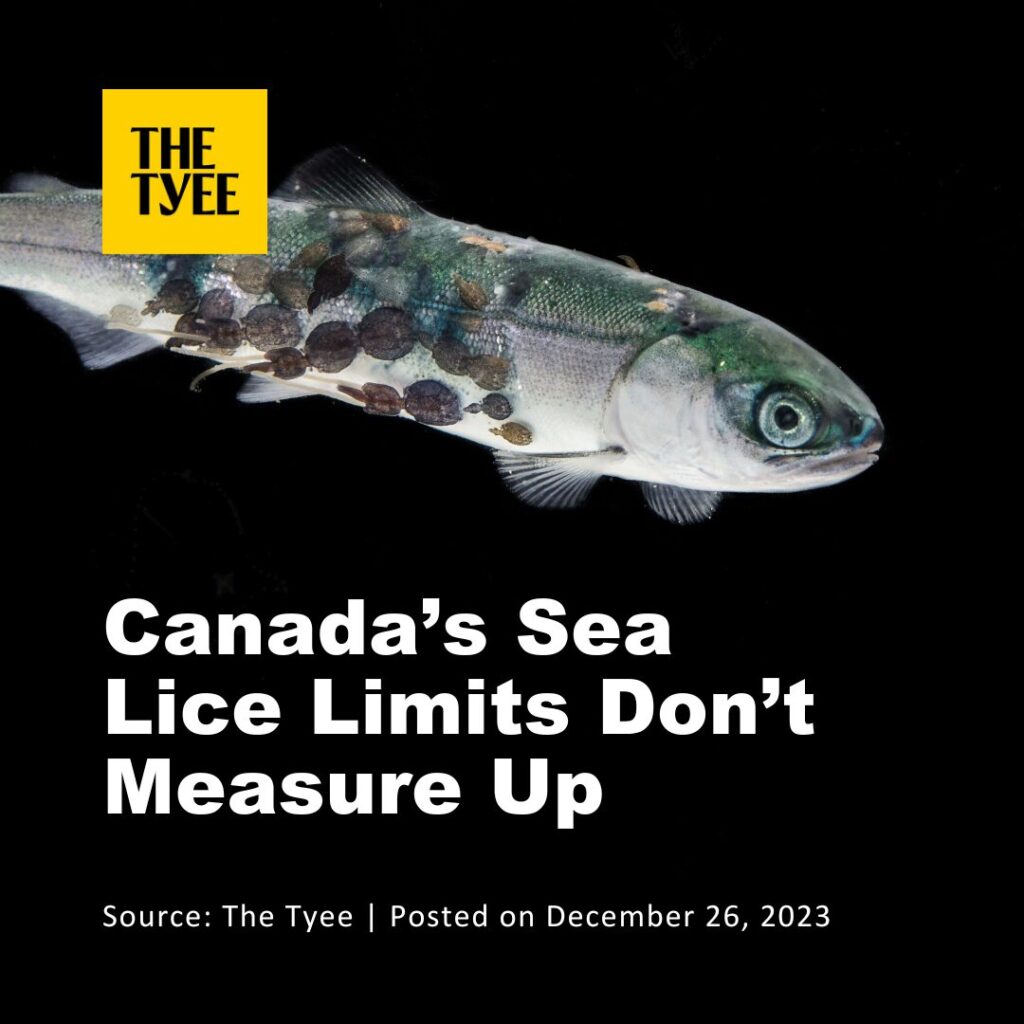
Canada’s sea lice regulations fail to protect wild Pacific salmon
A new study comparing salmon farming regulations in four countries finds that Canada’s rules fall short when it comes to protecting wild fish populations from one of the key threats posed by ocean-polluting salmon farms: ⚠️ sea lice infestations ⚠️
In BC, the lack of strong precautionary management for sea lice in Atlantic salmon farms poses an existential threat to wild Pacific salmon. As few as one or two sea lice may result in the death of juvenile fish as they migrate past the farms. Despite this risk, farm operators are granted a 42-day window to reduce levels if the sea lice count surpasses three per farmed fish, with each passing day posing a threat to wild salmon.
“Delousing technologies, such as hydrolicer machines that spray salmon with high-pressure water to remove parasites, can also prove deadly to smaller wild fish.” Canada’s ranking among the four countries could change dramatically if the federal government fulfils its 2019 commitment to transition BC away from open-net-pen salmon farming by 2025.
